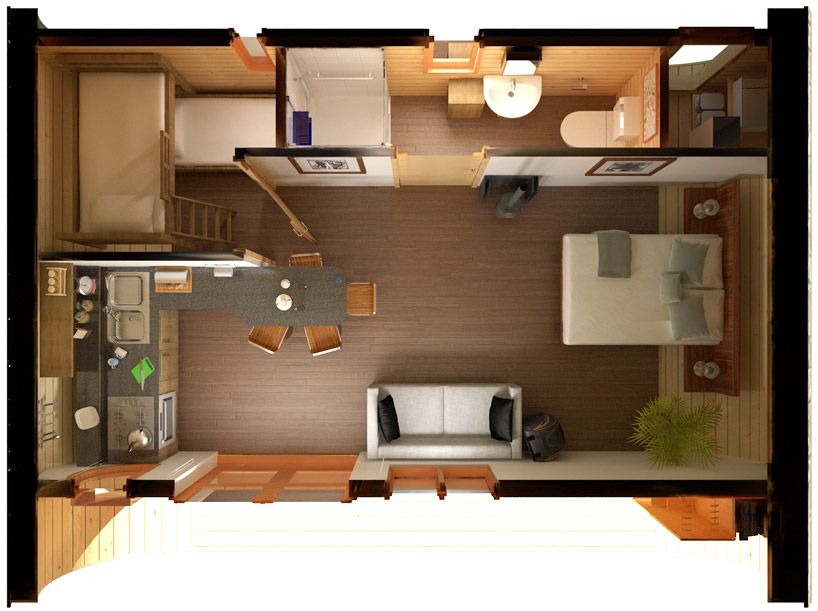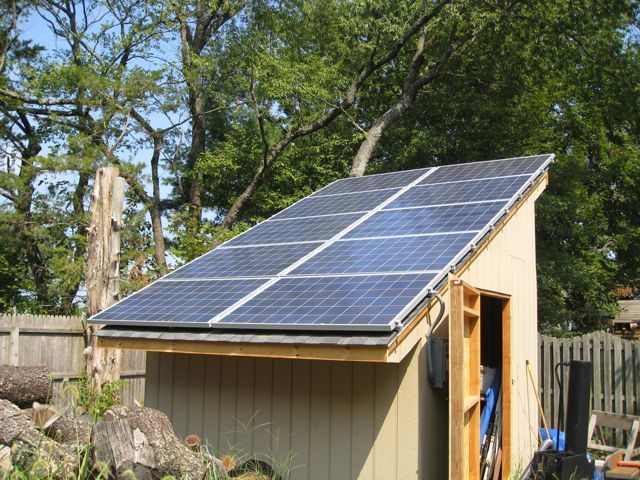When it comes to designing a tiny home layout, it can be challenging to fit all the necessary elements into such a small space while also maintaining aesthetic appeal.
However, by incorporating tried-and-true design principles, you can create a functional and beautiful layout that meets your needs and exceeds your expectations.
We’ll explore proven design principles for creating a successful tiny home layout, from selecting the right furniture and storage solutions to considering the importance of lighting and color scheme.
Whether you’re a seasoned tiny homeowner or just starting out, these tips will help you create a space that is both practical and beautiful.
Prioritize Functionality
Start by considering the main functions you want to perform in your tiny home, such as cooking, sleeping, and bathing. Plan your layout accordingly to ensure each space serves its intended purpose effectively.
Start by identifying the main functions you want to perform in your home, such as cooking, sleeping, and bathing.
Consider the specific needs of each function, such as the number of people who will be cooking or bathing at any given time, and the storage needs for each activity.
Next, plan your layout accordingly to ensure each space serves its intended purpose effectively.
For example, you may want to place the kitchen in a central location to facilitate food preparation and cleanup, and the bathroom near the bedroom to minimize the need for midnight treks through the house.
By prioritizing functionality, you can optimize your use of space and create a home that is both comfortable and practical.
Optimize Space
Make the most of your tiny home’s square footage by using multipurpose furniture, storing items wisely, and incorporating vertical space for storage.
To make the most of your tiny home’s limited square footage, it’s essential to embrace multipurpose furniture and thoughtful storage solutions.
Consider investing in versatile pieces like a sofa bed or a coffee table with built-in storage.
These types of furniture serve multiple purposes, saving space and minimizing clutter.
Be creative with your storage solutions by incorporating vertical space.
Use wall-mounted shelves, hooks, and baskets to maximize your space and keep your belongings organized.
Installing a ladder or loft can also help you utilize your vertical space for storage and create a cozy sleeping nook.
Take advantage of every nook and cranny by using small items like baskets and bins to store small items like toys, keys, and remotes.
By implementing these strategies, you can transform your tiny home into a functional and comfortable living space that makes the most of its limited square footage.
Choose Multi-Functional Furniture
Select furniture pieces that serve multiple purposes, such as a sofa bed or a desk with storage. This will help to minimize clutter and maximize space.
When it comes to decorating a small apartment, one of the most effective strategies is to choose furniture pieces that serve multiple purposes.
Multi-functional furniture not only helps to minimize clutter, but it also maximizes space by providing multiple functions in a single piece.
For example, a sofa bed can serve as both a comfortable seating area and a bed, while a desk with storage can provide a functional workspace and additional storage for office supplies.
By selecting furniture pieces that are versatile and multi-functional, you can create a more efficient and organized living space that is perfect for small apartments.
These types of furniture are often designed with space-saving features, such as compact sizes and hidden storage compartments, which can help to further maximize the use of space in your apartment.
By investing in high-quality multi-functional furniture, you can create a functional and comfortable living space that is well-suited to your small apartment lifestyle.
Consider Traffic Flow
Plan your layout to minimize traffic jams and ensure a smooth flow of movement throughout your tiny home. Avoid sharp turns and tight corners that can cause congestion.
When planning your tiny home layout, it’s essential to consider traffic flow and design your space to minimize traffic jams and ensure a smooth flow of movement.
Avoid sharp turns and tight corners that can cause congestion and make it difficult to maneuver.
Instead, opt for open and circular layouts that allow for easy movement and clear paths.
This can be achieved by incorporating wide doorways, strategic placement of furniture, and thoughtful use of storage to minimize clutter and maintain a clear pathway.
Consider the height of your ceilings and the placement of windows to allow for ample natural light and ventilation, which can help to improve the overall feel and functionality of your tiny home.
By taking these factors into account, you can create a layout that is both functional and comfortable, and that allows for easy movement and flow throughout your space.
Balance Privacy and Open Space
Create a balance between private spaces, such as bedrooms and bathrooms, and open areas for living, cooking, and socializing. Use dividers or sliding doors to separate spaces without compromising on openness.
When designing a home, it’s essential to strike a balance between private spaces and open areas for living, cooking, and socializing.
By creating separate areas for these different activities, you can ensure that each space is used to its full potential and that each member of the household has the privacy and comfort they need.
One way to achieve this balance is by using dividers or sliding doors to separate spaces without compromising on openness.
For example, you could use a sliding door to divide the living room from the kitchen, or a divider to separate the bedrooms from the rest of the house.
This allows for a seamless flow between spaces while still maintaining the privacy and quietness that private spaces afford.
By incorporating open areas into your design, you can create a sense of connection and community within the home, fostering a sense of togetherness and belonging.
Overall, balancing privacy and open space in home design is key to creating a functional, comfortable, and happy living environment.
Utilize Vertical Space
Make the most of your tiny home’s height by incorporating vertical storage, shelves, and hooks. This will help keep your belongings organized and off the floor.
Incorporating vertical storage, shelves, and hooks in your tiny home can have a significant impact on your living space.
By utilizing the full height of your home, you can maximize your storage potential and keep your belongings organized and off the floor.
This not only helps to maintain a clutter-free environment but also creates more usable space in your home.
For example, you can install shelves or hooks for hanging clothes, bags, or other items, freeing up space in your closet or on your floors.
You can utilize wall-mounted shelves or storage units for books, decorative items, or kitchenware, keeping them within easy reach and out of the way.
By making the most of your tiny home’s height, you can create a more functional and comfortable living space that feels larger than its physical dimensions.
Customize to Your Lifestyle
Design your tiny home layout based on your specific needs and lifestyle. For instance, if you work from home, dedicate a space for a home office. If you enjoy entertaining, create an inviting living area.
Customizing your tiny home layout to suit your lifestyle is key to ensuring that your living space is functional and fulfilling.
When designing your tiny home, consider your specific needs and preferences.
For instance, if you work from home, dedicate a cozy space for a home office, equipped with all the necessary furniture and tools to facilitate productivity.
This can include a desk, chair, bookshelf, and good lighting.
If you enjoy entertaining, create an inviting living area with comfortable seating, a dining table, and a kitchen that is well-equipped for hosting gatherings.
You may also want to consider incorporating storage solutions that cater to your specific needs, such as a closet organizer or a pantry.
By tailoring your tiny home layout to your lifestyle, you can create a living space that is both functional and enjoyable.
Add Storage Everywhere
Incorporate storage solutions throughout your tiny home, such as under-bed drawers, wall-mounted shelves, and hanging organizers. This will help keep your belongings organized and visible, and maintain a clutter-free space.
Incorporating storage solutions throughout your tiny home is a important step in maintaining a clutter-free space and keeping your belongings organized.
Start by incorporating under-bed drawers, which can provide ample storage space for items like linens, towels, and seasonal decorations.
Next, consider wall-mounted shelves, which can be installed at various heights to accommodate different-sized items.
These shelves can be used to store everything from books and decorative objects to kitchen utensils and cleaning supplies.
Add hanging organizers, such as hooks, baskets, or shelves, to make use of the vertical space in your tiny home.
These can be used to store items like jackets, hats, and bags, keeping them easily accessible and out of the way.
By incorporating these storage solutions throughout your tiny home, you’ll be able to keep your belongings organized, visible, and clutter-free.
Want More? Dive Deeper Here!
Hey there! If you’re the type who loves going down the rabbit hole of information (like we do), you’re in the right spot. We’ve pulled together some cool reads and resources that dive a bit deeper into the stuff we chat about on our site. Whether you’re just killing time or super into the topic, these picks might just be what you’re looking for. Happy reading!






